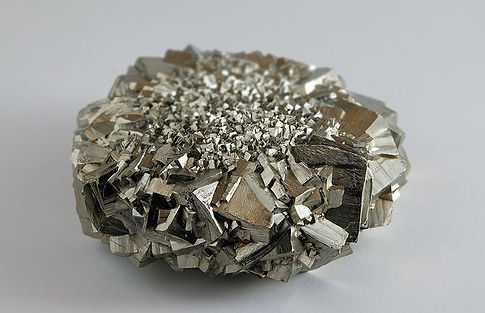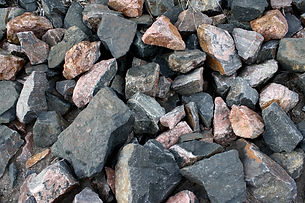

Rocks & Minerals
Scroll down for lesson videos, animations and diagrams.
Observation and classification have helped us understand the great variety and complexity of Earth materials. Minerals are the naturally occurring inorganic solid elements, compounds, and mixtures from which rocks are made. We classify minerals on the basis of their chemical composition and observable properties. Rocks are generally classified by their origin (igneous, metamorphic, and sedimentary), texture, and mineral content. Rocks and mineral help us understand Earth’s historical development and its dynamics. They are important to us because of their availability and properties. The use and distribution of mineral resources and fossil fuels have important economic and environmental impacts. As limited resources, they must be used wisely.
oVERVIEW

minerals
To be considered a mineral, the substance in question must meet the following criteria:
• Naturally occurring
• Solid
• Inorganic
• Definite chemical composition
• Definite crystalline structure

Minerals Lesson Video
How do we identify minerals?
COLOR
Most visible characteristic, but least reliable because many minerals share the same color and many minerals exist in different colors.


STREAK
The color of the mineral in powdered form (use a “streak plate”). Very reliable tool for identifying samples. Note: the color of the powdered form is often different from the color of the solid form.


LUSTER
Either metallic (shiny, like a polished metal) or nonmetallic (dull, with no shine). Types of nonmetallic luster include glossy, pearly, greasy, etc.

HARDNESS
The mineral’s resistance to being scratched. Minerals are compared to the ten minerals
on the “Moh’s Scale of Hardness”. Minerals are often compared to glass (hardness: 5.5)

FRACTURE/ CLEAVAGE
Cleavage is the tendency of a mineral to split along one or more smooth, flat surfaces. If a mineral does not display cleavage, it is said to have fracture, which means it breaks unevenly.
OTHER CHARACTERISTICS
that can be tested include: magnetism, reaction with chemicals, taste, specific gravity, crystal form, fluorescence, optics.
Calcite reaction to acid

esrt

rocks
the three types


Igneous Rocks
Lesson Review Videos
Igneous Rocks
Igneous Rocks ESRT
Igneous Rocks




Sedimentary Rocks
Lesson Review Videos
Sedimentary Rocks
Sedimentary Rocks ESRT
Sedimentary Rocks
Metamorphic Rocks
Lesson Review Videos
Metamorphic Rocks
Metamorphic Rocks ESRT
Metamorphic Rocks
